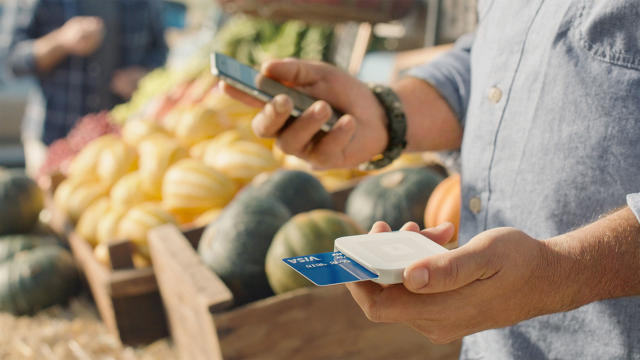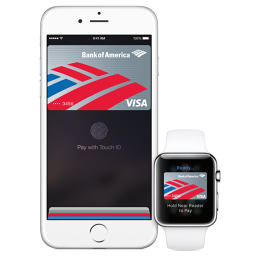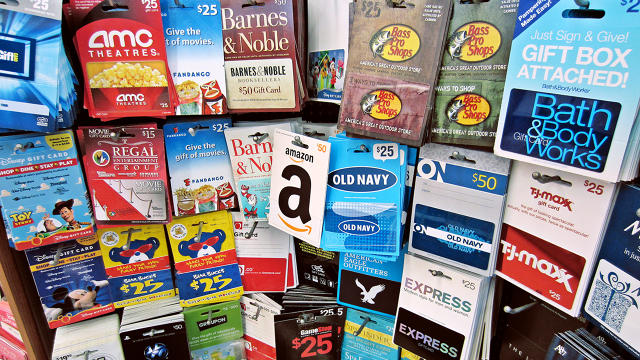the new Chip-outfitted bank cards: Safer, And (For Now) extra confusing
credit score-card issuers are racing to get new playing cards with embedded chips into consumers’ hands. but retailers don’t seem to be prepared for the shift.
August 21, 2015
for those who live within the U.S. and have a bank card, you’ve virtually for sure bought a alternative card out of the blue in the ultimate three months, continuously paired with an elaborate explanatory booklet. Your new card, the booklet explains, incorporates a different chip on the way to offer protection to your transactions more successfully, cut back fraud, and make your life better. the first two elements of that statement, at least, are genuine.
however you will not need a PIN (personal identification quantity) for credit-card transactions, despite what you will have learn in newspaper and journal tales in U.S. publications during the last yr. (Debit cards will still require PINs, as they do nowadays.) The confusion over what’s coming will result in frustration, service provider liability, and attainable misplaced sales and unexpected fraud after a rule change kicks in October 1.
Being forewarned will go away you forearmed—whilst retail clerks receiving little or no training may be baffled by using the fundamentals of processing a transaction, and also you come upon old-fashioned payment systems in all places.
A Chip (And PIN) Off The previous Block
Chip-and-PIN cards pair an embedded chip in a credit or debit card with a short numeric code. The chip replaces the magnetic-tape strip which is been a mainstay in cards for many years to swipe thru a reader or insert right into a kiosk, and the PIN is acquainted from debit-card transactions and money withdrawals.
The EMV transaction chip is extensively used round the remainder of the arena, with card issuers prime the way in which in the United Kingdom over a decade ago, and most of the remainder of Europe following within a few years. (EMV originally stood for Europay, MasterCard, and Visa, which collectively created the usual; now it is run with the aid of EMVCo, a consortium operated by American categorical, discover, JCB, MasterCard, UnionPay, and Visa.)

EMV use has unfold international, and the united states is the ultimate market of any substance that hasn’t adopted the usual. EMV chips are largely utilized in a contact-based kind: You dip or slide a card into a reader, which creates a circuit that allows handshaking with the cost terminal. a unique transaction is created that involves cryptographic information embedded within the chip.
For cards that require PINs, the transaction cannot be completed with out that code, which isn’t transmitted remotely as with nowadays’s debit and ATM transactions. Some cards are outfitted with close to-field communications (NFC) radios for contactless EMV, and will work with level-of-sale programs that enhance Apple Pay and different rising technologies.
EMV chips cut back fraud that arises from counterfeit cards, and, at their introduction, also secure in opposition to the misuse of misplaced and stolen playing cards. Magnetic-stripe cards will also be simply cast by using particular person thieves or crime rings from card knowledge stolen online. These playing cards can them be disbursed out to networks of unwitting mules and knowing compatriots. The EMV chip prevents this kind of easy counterfeiting.
The code requirement in chip-and-PIN transactions existed originally as a result of it was too expensive within the U.okay. and Europe to confirm every transaction by means of “callout”: a credit score-card terminal dialing up or the use of an internet connection to validate that the cardboard wasn’t canceled and wasn’t marked misplaced or stolen. as a substitute, transactions were batch-processed after the fact.
Julie Conroy, research director for retail banking at Aite team, says in the early 2000s the U.okay had a fraud price nearly four times as excessive as the U.S. as a result of chip and PIN makes use of the code to unlock the card without a are living network connection, it fit perfectly into the present infrastructure. (on-line PINs are additionally that you can imagine in the standard, however approving transactions as they happen is now not the problem it used to be over a decade ago.)
Conroy says PINs at first dramatically lowered fraud rates with misplaced and stolen playing cards in comparison with magnetic-stripe cards, as the older model may merely be swiped and signed for. however over time, she says, criminals have adapted, and retail fraud is “back above the place they started their migration.”
The chip requirement does still lend a hand cut back counterfeiting, and fraud with misplaced and stolen playing cards represents handiest 13% of all card fraud, in step with her analysis. but deterring counterfeiting can create huge financial savings. Conroy says counterfeit fraud within the U.S. used to be about $1 billion in 2012 and doubled to $2 billion with the aid of 2013. for this reason card issuers finally set a closing date after years of dragging their feet.
With a extremely aggressive surroundings for acquiring and retaining buyers—and no compelling anti-fraud argument—all of the giant issuers are the usage of “chip and signature”: dip and sign, relatively than dip and enter a PIN. All debit cards will continue PINs, which can be so long as six digits. ATMs may lag in assisting chipped cards, alternatively.
Imposing a PIN requirement in the us for credit cards would it sounds as if irritate and confuse us. “No card issuer desires to be the cardboard that has essentially the most troublesome experience,” says Conroy. She notes that an earlier rollout in Canada during which some banks opted for PINs was a cautionary story for U.S. banks. as a result of problems issuing PINs, “they noticed their transaction extent dip significantly.”
For the foreseeable future, all credit score and debit playing cards will have both magnetic strips and chips, for backwards compatibility. whereas banks have gotten on the bandwagon, the merchant side of the equation is going to lag. it can be an ongoing headache, particularly for smaller stores and people who make cellular gross sales, such as merchants at fairs.
Swipe My Card? don’t be A Dip
here’s where it will get particularly confusing. In an ideal world, a smartly-planned transition would permit merchants the time—and potentially even a cost destroy on the price of the new tools—to move from a machine that prices banks vast money to 1 that is so much less fraud-vulnerable. serving to retailers make the transfer would be certain many of the estimated 8 to 10 million retail locations in the us that settle for swipeable cards would have EMV readers prepared to head.
after all, we don’t live in an excellent world, as that you would be able to tell with the aid of consulting the high-time tv lineup. rather, we live in a global that operates in matches and begins with uneven dissemination of knowledge. On October 1, 2015, the key card networks—Visa, MasterCard, and the remainder—will impose a shift in liability for fraudulent transactions at points of sale. (except for gas-station pumps, so that it will get 10 months of additional relief.)
merchants who lack terminals that may learn EMV playing cards will undergo all the cost of a counterfeit, misplaced, or stolen “card current” transaction starting October 1, except for if the bank issuing the cardboard that’s used hasn’t yet up to date to make use of EMV. if that’s the case on my own will the bank bear responsibility. Most playing cards will have to be upgraded, but Conroy’s analysis displays that best fifty nine% of retail places will have the ability to go along with chip readers through the end of 2016. That leaves thousands and thousands with just old-fashioned swipe readers.
A client who swipes a chipped bank card in a reader that’s equipped with an EMV reader must be caused to dip the cardboard as an alternative. This will have to keep the service provider from bearing extra risk as a result of someone swiping as a substitute of dipping. If the cardboard has a PIN—whether or not from one of the vital few U.S. financial institution which require it, a debit card, or a world visitor from a chip-and-PIN area—the patron is prompted to enter the PIN.

however in some cases, relying on how the card is set up, even a card that supposedly requires a PIN will also be demonstrated with just a signature. much more confusingly, some retailers Conroy’s firm has surveyed believe their terminal systems may give a boost to just signing or just PIN, which is apparently mistaken, and can lead to errors in coaching clerks.
Conversely, americans going to Europe and other chip-and-PIN regions with their newly chipped playing cards will have to persuade clerks there that they are able to just sign for a transaction. while terminals were updated to allow bypassing PIN entry, I’ve already heard stories about merchants being doubtful. they may get used to it. Most self-serve kiosks that accept playing cards have only recently got chip-and-signature updates.

retailers most often get to decide on a restrict beneath which no signature is required with these days’s stripe-based credit cards; the same will follow with EMV transactions. So it is possible for you to to dip-and-not-signal simply as you swipe-and-don’t-sign today.
In some countries, it’s easy for consumers to get bank cards with embedded NFC technology, allowing them to make a cost via waving the card at a reader. Some banks push these closely to their customers. In the us, although, because NFC hasn’t caught on until just lately, analysts predict that NFC via smartphone and smartwatch products and services reminiscent of Apple Pay and Android Pay will dominate contactless transactions.
on the other hand, domestic and global NFC cards will be supported at virtually all EMV terminals, because merchants who improve are becoming both EMV and NFC without delay. Touchless payment playing cards can have completely different no-signature limits, too, just as we’ve got already seen with Apple Pay et al., so you may well be asked to tap and signal.
In a survey of a spread of merchants in October 2014, Conroy’s group found that simplest sixteen% of respondents planned to have any formal coaching for front-line workers. Seventy-eight p.c plan “casual worker-to-employee coaching,” which is able to every now and then be the identical of urban fantasy. That should make for a enjoyable experience for patrons.
do not seem to be a gift Card In Its Face worth
In that same Aite group survey, one in three small to midsize retailers—these with up to a few million in annual gross sales—hadn’t yet even heard of EMV. A ballot from Wells Fargo/Gallup released on August 6 found 49% of small retailers were ignorant of the October 1 legal responsibility shift. (Wells Fargo offers merchant services and products to such companies.)
that is troubling on account of where legal responsibility lies. Conroy notes that for some varieties of retail businesses with common and native customers, the legal responsibility shift won’t topic a lot. merchants will still be getting card approvals, and, she says, a automotive mechanic or a hair salon usually faces a very low stage of fraud.
however Conroy says that comfort and corner stores are more susceptible. if you’ve been in one today, you’ll be able to observe racks of gift cards. they are also offered in shops and whole-scale groceries, but these retailers are more likely to convert to EMV terminals fast.
as a result of these items are primarily as just right as money, merchants which have swipe-handiest terminals will transform the most attractive target for customers of counterfeit playing cards, who can use them to buy present cards. “a few of those guys are going to go out of business,” Conroy says of small stores. (She notes likewise that any bank that hasn’t pushed out EMV cards will be in unhealthy form: “Fraudsters will goal rather more intensively these banks that have not upgraded.”)

there’s without a doubt some certain news on the horizon for smaller merchants, though, particularly these already tied into square, PayPal, and other smartphone-savvy cost techniques. each sq. and PayPal have announced EMV/NFC readers coming this fall. sq. carried out a public demonstration at Apple’s WWDC convention in June in San Francisco; its reader looks as if a jumbo-sized version of its well-known white sq.-formed reader, and can make stronger all major NFC cost systems.
square hardware chief Jesse Dorogusker says the agency will attempt to get its new, battery-powered, Bluetooth-related device into the hands of all retailers, despite dimension, in addition to a host of alternative small businesses that lack a retail presence however settle for bank cards. the company is giving 250,000 readers away and will cost all others $forty nine. however, the corporate will rebate that quantity by using crediting its usage charges towards the purchase value. sq. also announced a couple of days in the past it’ll soak up merchant legal responsibility for swiped transactions for any of its customers who order the EMV/NFC reader except it arrives.
Dorogusker says that shoppers must “insist on paying with authenticated payment applied sciences,” whether or not EMV or Apple, Android, and Samsung-style NFC tokenized fee programs. “we’re taking a robust place that these authenticated fee technologies are essential,” he says, with the aid of releasing a device designed to make the transaction as straightforward as the current square reader.

He notes that these new technologies come with totally different gestures: americans had been principally trained handy their cards over a clerk, while individuals in nations with chipped playing cards function the transaction themselves, whether or not tapping or dipping. The square reader is designed to be easy and unobtrusive. PayPal has designed a an identical tool that rather more intently resembles in type and performance present card-processing units, and comprises manual-entry buttons.
Fraud Seeks Out The inclined
while you stroll into most chains on October 1, you’ll be able to see the newest and finest in swipe and faucet expertise. In my neck of the woods, I noticed precisely the shape of things to come back when trader Joe’s upgraded its terminal right through Seattle. in the area of a few weeks, I went to a few completely different outlets on multiple occasions, and gently requested clerks about the methods.
In some cases, they have been unaware that the NFC possibility worked, until I paid with Apple Pay. (The gadget continues to be funky, requiring extra steps after tapping as if i would swiped a card.) Some knew the chip-dipping characteristic used to be coming, however all notion it wasn’t lively yet—I failed to are attempting, lest I mess one thing up.
Smaller retailers will lag and microbusinesses without retail presences could lag the longest of all, however the ones that experience excessive charges of fraud will quickly trade their techniques or go bust.
but that you could predict what this implies: as soon as the window to commit credit score-card fraud is closed all the way down to a wee crack, criminals will turn their attention to other strategies of thievery, together with online theft. it can be already rampant, and it’s about to get worse.
(150)







